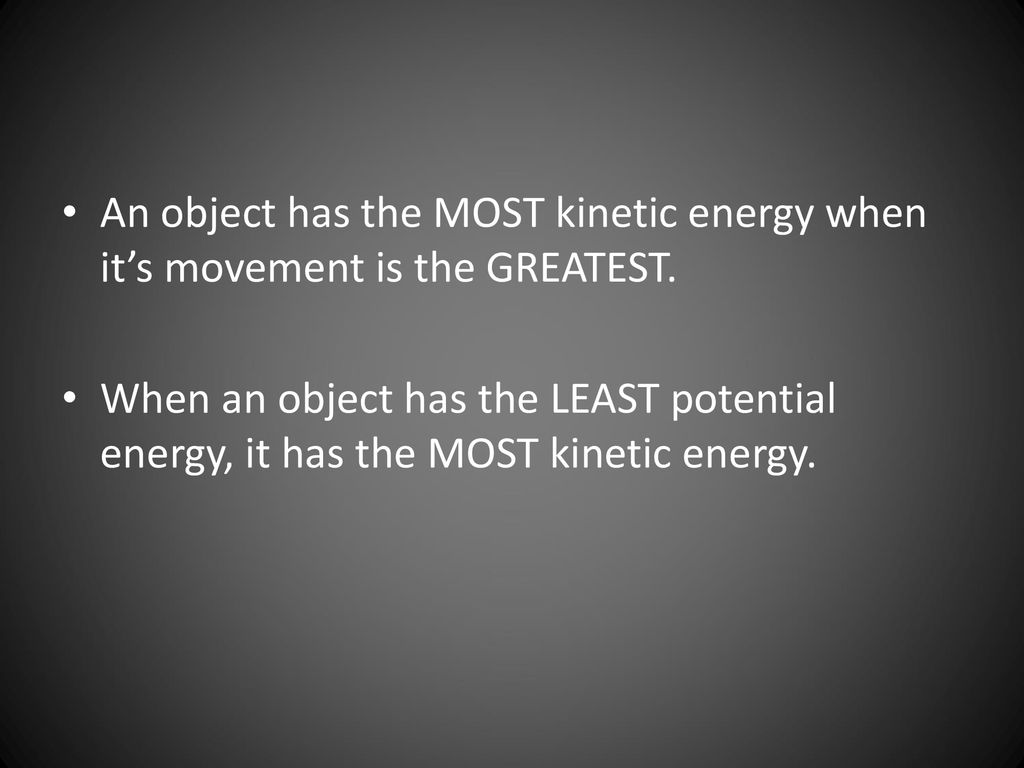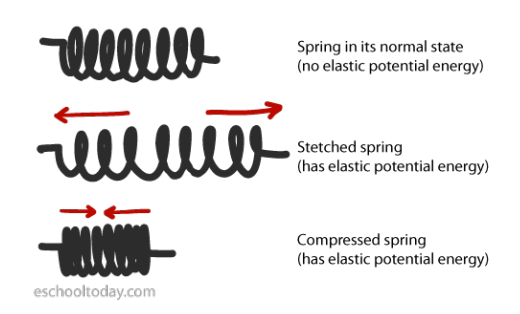Google Classroom Learn what kinetic energy means and how it relates to work. What is kinetic energy? Kinetic energy is the energy an object has because of its motion. If we want to accelerate an object, then we must apply a force. Applying a force requires us to do work.
Potential & Kinetic Energy of a Pendulum | Overview & Examples – Lesson | Study.com
Jan 18, 2024Kinetic energy formula. The kinetic energy formula defines the relationship between the mass of an object and its velocity. The kinetic energy KE equation is as follows: KE = 0.5 × m × v². where: m — Mass; and. v — Velocity. With the kinetic energy formula, you can estimate how much energy is needed to move an object.

Source Image: sciencebuddies.org
Download Image
Unlike velocity, acceleration, force, and momentum, the kinetic energy of an object is completely described by magnitude alone. Like work and potential energy, the standard metric unit of measurement for kinetic energy is the Joule. As might be implied by the above equation, 1 Joule is equivalent to 1 kg* (m/s)^2. 1 Joule = 1 kg • m2/s2.

Source Image: amigoenergy.com
Download Image
Describe the differences between kinetic and potential energy. – ppt download
The more mass a moving object has, the more kinetic energy it will possess at the same speed. A 2000 kg car moving at 14 m/s has twice as much kinetic energy as a 1000 kg car moving at an equivalent 14 m/s. Because the velocity term in this formula is squared, velocity has a much larger effect than mass does on kinetic energy.

Source Image: kellyoshea.blog
Download Image
Which Object Has The Most Kinetic Energy
The more mass a moving object has, the more kinetic energy it will possess at the same speed. A 2000 kg car moving at 14 m/s has twice as much kinetic energy as a 1000 kg car moving at an equivalent 14 m/s. Because the velocity term in this formula is squared, velocity has a much larger effect than mass does on kinetic energy.
4.1: Kinetic Energy. For a long time in the development of classical mechanics, physicists were aware of the existence of two different quantities that one could define for an object of inertia m and velocity v. One was the momentum, mv, and the other was something proportional to mv2.
Energy Pie Charts – Physics! Blog!
Jan 21, 2024A two-kilogram mass (something weighing 4.4 pounds on Earth) moving at a speed of one metre per second (slightly more than two miles per hour) has a kinetic energy of one joule. In the centimetre-gram-second system the unit of energy is the erg, 10 −7 joule, equivalent to the kinetic energy of a mosquito in flight.
Potential and Kinetic Energy Explained | Education Overview

Source Image: justenergy.com
Download Image
Kinetic Energy: Example Problems – YouTube
Jan 21, 2024A two-kilogram mass (something weighing 4.4 pounds on Earth) moving at a speed of one metre per second (slightly more than two miles per hour) has a kinetic energy of one joule. In the centimetre-gram-second system the unit of energy is the erg, 10 −7 joule, equivalent to the kinetic energy of a mosquito in flight.

Source Image: m.youtube.com
Download Image
Potential & Kinetic Energy of a Pendulum | Overview & Examples – Lesson | Study.com
Google Classroom Learn what kinetic energy means and how it relates to work. What is kinetic energy? Kinetic energy is the energy an object has because of its motion. If we want to accelerate an object, then we must apply a force. Applying a force requires us to do work.

Source Image: study.com
Download Image
Describe the differences between kinetic and potential energy. – ppt download
Unlike velocity, acceleration, force, and momentum, the kinetic energy of an object is completely described by magnitude alone. Like work and potential energy, the standard metric unit of measurement for kinetic energy is the Joule. As might be implied by the above equation, 1 Joule is equivalent to 1 kg* (m/s)^2. 1 Joule = 1 kg • m2/s2.

Source Image: slideplayer.com
Download Image
Elastic Potential Energy (GCSE Physics) – Study Mind
The kinetic energy of a particle is one-half the product of the particle’s mass m and the square of its speed v: K = 1 2 m v 2. 7.6. We then extend this definition to any system of particles by adding up the kinetic energies of all the constituent particles: K = ∑ 1 2 m v 2. 7.7.

Source Image: studymind.co.uk
Download Image
Analyzing Data to Compare and Contrast Kinetic & Potential Energy Practice | Physical sciences Practice Problems | Study.com
The more mass a moving object has, the more kinetic energy it will possess at the same speed. A 2000 kg car moving at 14 m/s has twice as much kinetic energy as a 1000 kg car moving at an equivalent 14 m/s. Because the velocity term in this formula is squared, velocity has a much larger effect than mass does on kinetic energy.

Source Image: study.com
Download Image
Exploring Kinetic Energy – Types, Examples, Formula Derivation
4.1: Kinetic Energy. For a long time in the development of classical mechanics, physicists were aware of the existence of two different quantities that one could define for an object of inertia m and velocity v. One was the momentum, mv, and the other was something proportional to mv2.

Source Image: byjus.com
Download Image
Kinetic Energy: Example Problems – YouTube
Exploring Kinetic Energy – Types, Examples, Formula Derivation
Jan 18, 2024Kinetic energy formula. The kinetic energy formula defines the relationship between the mass of an object and its velocity. The kinetic energy KE equation is as follows: KE = 0.5 × m × v². where: m — Mass; and. v — Velocity. With the kinetic energy formula, you can estimate how much energy is needed to move an object.
Describe the differences between kinetic and potential energy. – ppt download Analyzing Data to Compare and Contrast Kinetic & Potential Energy Practice | Physical sciences Practice Problems | Study.com
The kinetic energy of a particle is one-half the product of the particle’s mass m and the square of its speed v: K = 1 2 m v 2. 7.6. We then extend this definition to any system of particles by adding up the kinetic energies of all the constituent particles: K = ∑ 1 2 m v 2. 7.7.